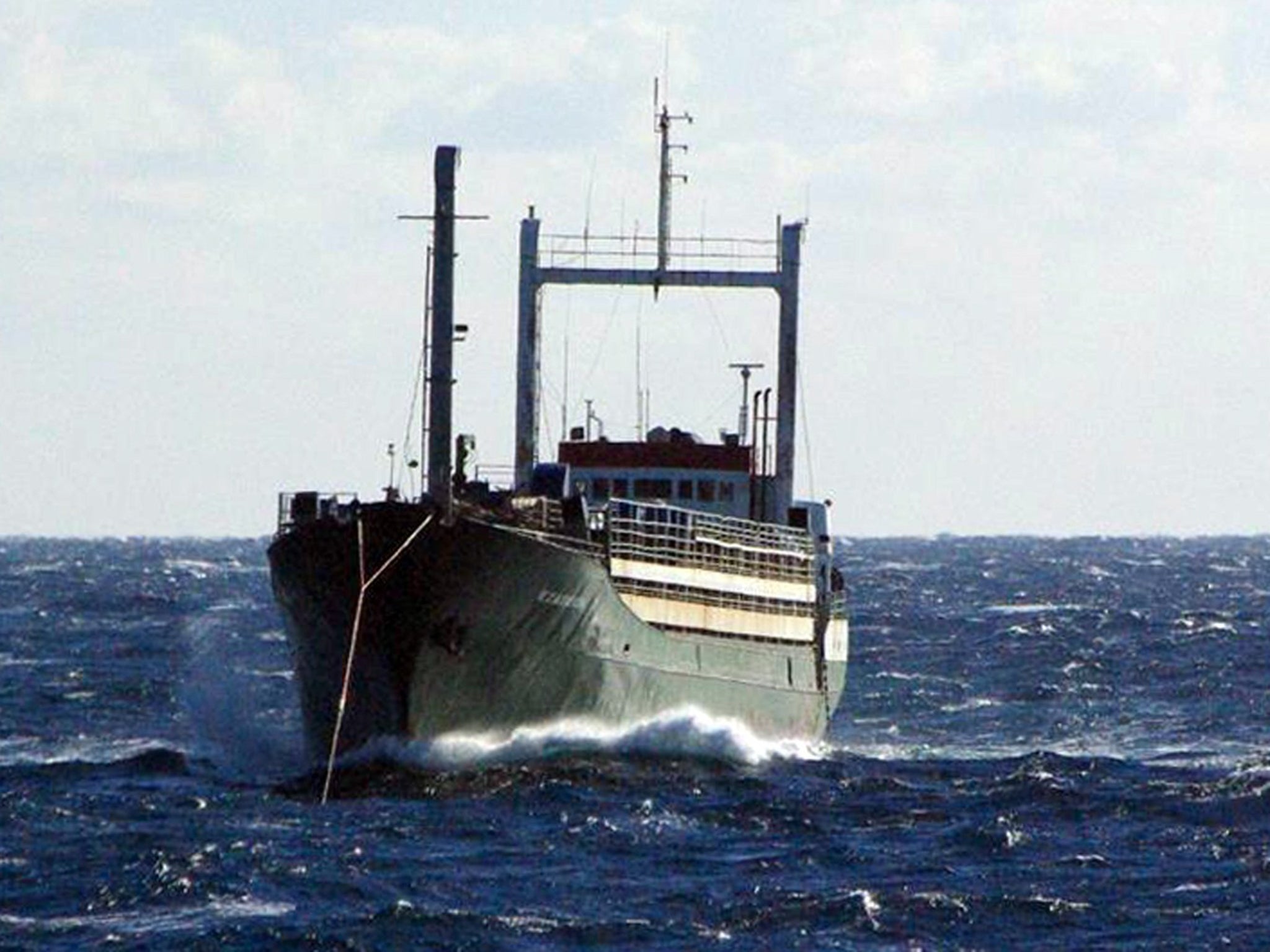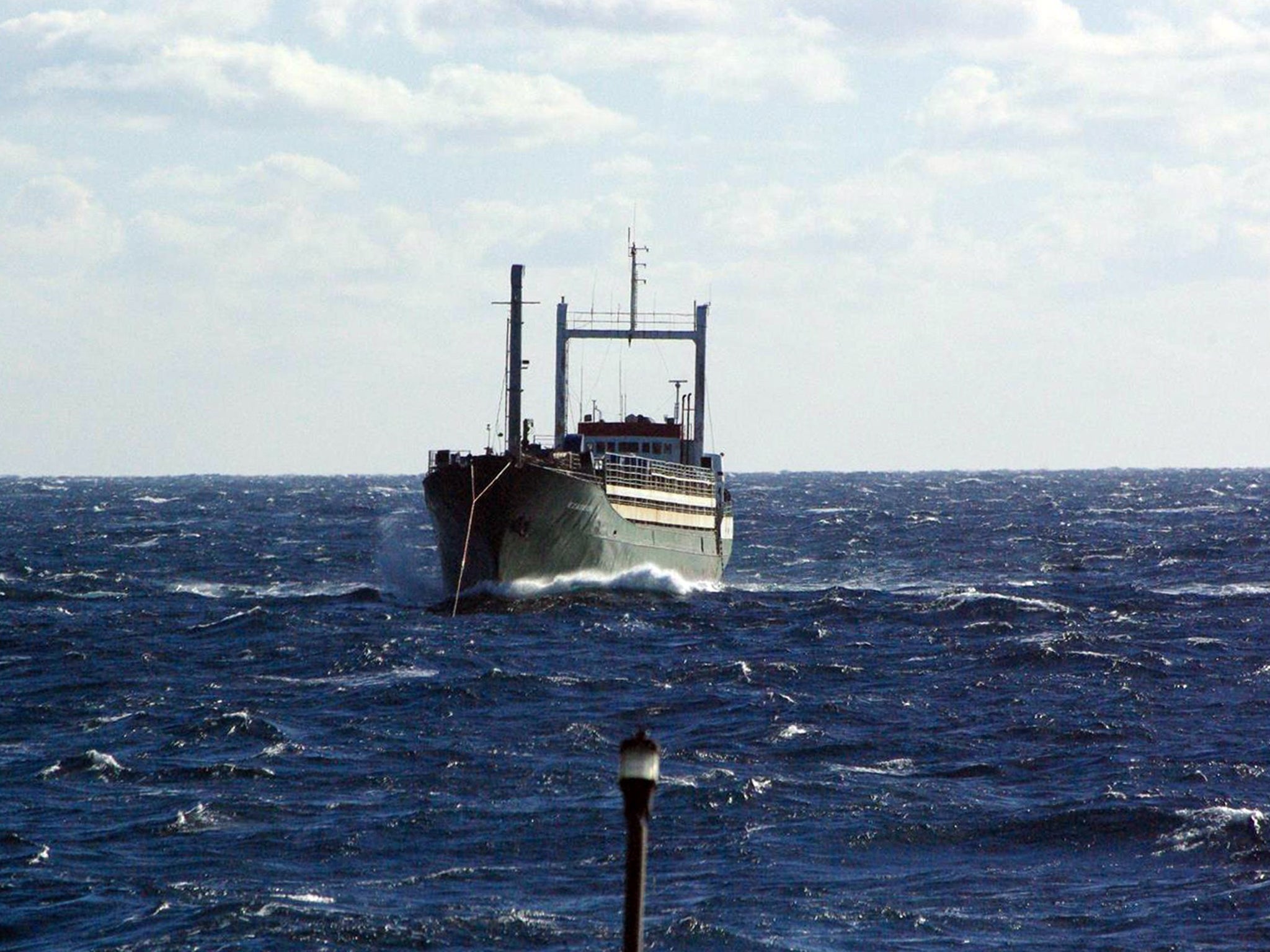Ghost ship with a human cargo: The worrying new trend used by traffickers to exploit people desperate to flee the Middle East
With not a crewman in sight, another vessel crammed with refugees has been found drifting in the Mediterranean. What can the world do to stop the callous but efficient new strategy being used by the people traffickers?

The Italian Coast Guard was last night towing the second unmanned ship containing hundreds of migrants to appear off its coast this week into port.
The so-called “ghost ships” are a worrying new trend as human traffickers exploit desperate refugees bidding for a new life in Europe.
The Lebanese vessel Ezadeen, which was discovered with about 450 passengers on board, is registered as a livestock vessel. But even cattle are not left to cross dangerous high seas in mid-winter with no crew and the vessel on autopilot.
Coast Guard officers boarded the Ezadeen from a helicopter yesterday morning and navigated it towards Corigliano Calabro where it was due to arrive late Friday night.
The practice of using “ghost ships” – filling rust buckets with refugees, pointing the vessel towards Italy and then fleeing with the passengers’ life-savings – appears to be a worrying new development in human trafficking, the UN’s refugee agency, the UNHCR, warned yesterday.
The rescue of the Ezadeen follows a similar operation to save hundreds of migrants aboard another abandoned ship, the Blue Sky M, on Wednesday.

“We are seeing this new trend. It’s apparent there have been other such incidents – maybe four or five in the past two months,” said UNHCR spokesman William Spindler.
“But only when the Blue Sky M incident occurred this week, which involved nearly 1,000 people, did it capture everyone’s attention.”
Mr Spindler said it showed that human traffickers were changing tactics. “They’re using bigger boats and different routes to smuggle people.
“In the past they have come from Libya in dinghies and boats, but that route seems to have been closed by Frontex [the EU’s border agency].”
Admiral Giovanni Pettorino of the Italian Coast Guard said that by charging hundreds of desperate refugees thousands of dollars at a time, gangs in North Africa and the Middle East were still able to make big profits by writing off ageing ships in the process of smuggling human beings.
“They purchase unseaworthy vessels for $100,000 to $150,000 (£65,000 to £97,000) and then fill them with hundreds of migrants, mainly Syrian nationals, who pay $6,000 each for the crossing from the Turkish coast to Europe,” said Admiral Pettorino.
He told the Adnkronos news agency that the criminals were netting up to $5m per trip and therefore “had no hesitation about jumping ship, given the profit margins”.

Last month the UNHCR described the Mediterranean crossing from the Middle East and Africa to Europe as “the most lethal route in the world” after a record 3,419 migrants lost their lives in 2014 crossing the sea.
Although it has not been confirmed where the migrants aboard the Ezadeen come from, the UNHCR told The Independent it believed the number of refugees from Syria was rising sharply.
In 2014 for the first time, people from refugee-producing countries – mainly Syria and Eritrea (as opposed to countries producing high numbers of economic migrants) – “have become a major component in this tragic flow, accounting for almost 50 per cent of the total”, said the UN body. On Wednesday about 900, mostly Syrian, refugees arrived in Italy after they were abandoned by the crew of the Moldovan-registered Blue Sky M cargo ship, who had fled leaving the vessel on a crash course for the Italian coast. The Coast Guard also boarded that vessel and navigated it to port.
The Blue Sky M drifted within five miles of the shore before six navy officers were lowered on to the ship by helicopter and succeeded in bringing it under control.
One migrant aboard the 48-year-old Ezadeen, which is registered in Sierra Leone but has Lebanese owners, managed to operate the vessel’s radio and contact the Italian Coast Guard on Thursday night.
By this point the ship’s crew had fled, leaving it to plough a The Coast Guard notified the nearby Icelandic patrol boat Tyr, which was in the area on a mission with Frontex. The Tyr drew alongside the runaway ship, but huge waves made boarding impossible.
A Frontex spokesman said: “It was not until some hours later, when the vessel carrying the migrants ran out of fuel, that five Icelandic officers were able to get on board, attach a tow rope and bring the ship under control.”
Yesterday, six Italian Coast Guard officers were lowered from a helicopter on to the deck of the 73m-long Ezadeen to take control and navigate the vessel to the Italian mainland.
Frontex said the migrants aboard were “visibly distressed but overall in good medical condition”. They have been given food, water and basic medical assistance.
Coast Guard spokesman Filippo Marini said the nationality or nationalities of the migrants was not yet clear.
He added: “What is clear is that among them there were lots of children and women, including some pregnant women. What we know for now is that the ship left from a Turkish port and that the crew fled.”
Join our commenting forum
Join thought-provoking conversations, follow other Independent readers and see their replies
Comments